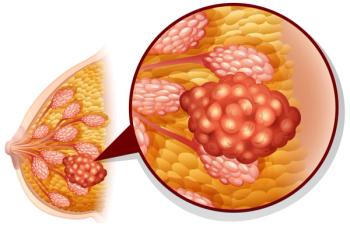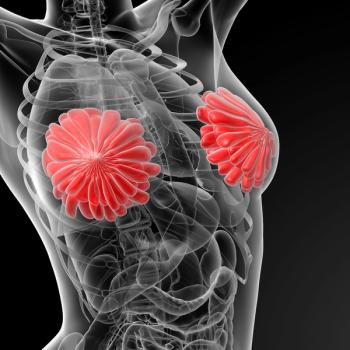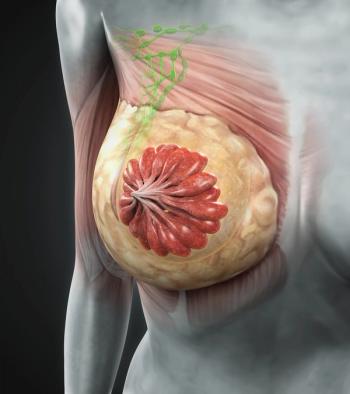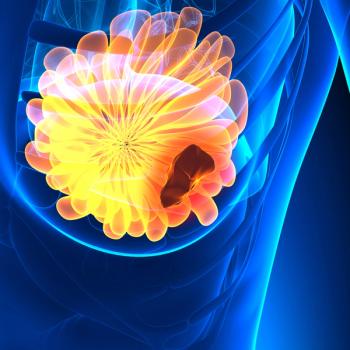
- ONCOLOGY Vol 10 No 4
- Volume 10
- Issue 4
New DNA Analysis Technique Superior in Determining Breast Cancer Prognosis, Says Study in JNCI
A new DNA-based sequencing technique-Sequence Based Diagnosis (SBD)-that determines p53 gene status in primary breast cancers, yields better prognostic information than standard immunohistochemistry, according to a study in the February 20, 1996, issue of the Journal of the National Cancer Institute. The findings may have important implications for some of the over 180,000 US women diagnosed annually with breast cancer.
A new DNA-based sequencing technique-Sequence Based Diagnosis(SBD)-that determines p53 gene status in primary breast cancers,yields better prognostic information than standard immunohistochemistry,according to a study in the February 20, 1996, issue of the Journalof the National Cancer Institute. The findings may have importantimplications for some of the over 180,000 US women diagnosed annuallywith breast cancer.
"These are important findings for women and their physicianswho, every day, must make decisions about therapy," saidJonas Bergh, MD, associate professor of oncology at Universityof Uppsala, and a director of the study. "The goal of clinicalresearch must be that we will be able to treat these women moreintelligently and efficiently."
Since cancer develops in stages through a step-by-step breakdownof the mechanisms that control normal cellular growth, an accumulationof genetic changes has been identified as a key event in the progressionof the disease. p53, a tumor-suppressor gene, is located on theshort arm of chromosome 17; mutations of the p53 gene are consideredto be a critical step in the development of certain tumors.
Study Results
The JNCI study compared the effectiveness of a cDNA-based sequencingmethod developed by Pharmacia Biotech AB, Sequence Based Diagnosis(SBD), with the standard method, immunohistochemistry (IHC), indetecting p53 mutations in breast cancer specimens and in determiningthe prognostic value of the information obtained using these methods.
The study showed that the SBD technique is superior to IHC indetecting p53 status and determining prognosis in breast cancer.Specifically, 23 breast cancers with p53 mutations detected bySBD did not generate a positive IHC reaction, suggesting thatIHC failed to detect 33% of the mutations. Also, 19 of the IHC-positivetumors sequenced negative, indicating a 30% false-positive ratewith IHC.
"The importance of Sequence Based Diagnosis cannot be overstated,"said Margaret Bywater, MedPhL. "For years, we've been awareof the relevance that emerging molecular techniques can have inevaluating tumor development, determining prognosis, and ultimately,guiding choice in therapy. It is gratifying to see confirmationof this work." Dr. Bywater, a pioneer of the SBD techniqueand former director, molecular medicine, market development, MolecularSystems Division, at Pharmacia Biotech, is currently a consultantto the industry.
The current article is the final installment in a landmark three-partstudy of 316 Swedish women operated on for breast cancer fromJanuary 1987 through December 1989. The study represents the firstcomplete sequencing of the p53 gene in a large retrospective studyof a population-based cohort. Earlier published articles on thisstudy have shown that complete sequencing of the p53 gene willpotentially lead to more tailored regimens and, ultimately, improvepatient survival.
The study was supported by grants from Pharmacia Biotech, Uppsala,Sweden and the Swedish Cancer Society, and was conducted at theUppsala Akademisk University Hospital, Sweden.
To further establish the clinical utility of p53 mutation statusas a potential marker to better predict response to therapy inbreast cancer disease management, Pharmacia Biotech will beginwork in 1996 on a joint project with Pharmacia & Upjohn (Milano),the company's headquarters for the oncology treatment productportfolio.
Articles in this issue
over 29 years ago
Radiosurgery Plus Sensitizer Tested for Brain Tumorsover 29 years ago
Regular NSAID Use Appears to Reduce Breast Cancer Severityover 29 years ago
Deaths from Melanoma--United States, 1973-1992over 29 years ago
Survivors of Childhood Cancer Face Other Medical Risks As Adultsover 29 years ago
Post-Transplantation Complications of Unrelated Bone Marrowover 29 years ago
Intensified VICE Regimen May Improve SCLC SurvivalNewsletter
Stay up to date on recent advances in the multidisciplinary approach to cancer.





